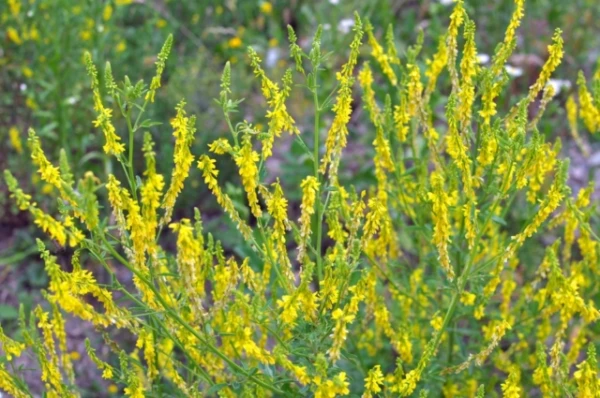
You may have heard nothing at all about Paulownia. Nevertheless, this plant is gaining popularity. It is increasingly found as a decorative plant in botanical gardens, dendrological parks, street plantings, private nurseries, and plots. But why?
WONDER TREE?
- Paulownia is a genus of long-lived trees (living up to 100 years), predominantly found in China and Japan. As a park culture, it is actively cultivated in countries across Europe and North America.
Paulownia is distinguished by its remarkable growth rate, reaching heights of up to 20 m in just 10 years. The annual shoot growth in a temperate climate is 2.5–3 m, while in a subtropical climate, it can reach up to 5 m. It is undemanding in terms of soil, and when cut down, it can regenerate quickly: it can be felled up to 8 times without destroying the plantings, said botanist Andrei ZUBAREV. - Paulownia is resistant to air and soil pollution. Its powerful roots effectively cleanse the soil of heavy metals and radionuclides, preventing soil erosion.
Due to its large leaves and beautiful flowering, it is often used in landscaping projects to create shade and beautify gardens; it is also ideal for greening. The leaves and bark of Paulownia are widely used in cosmetology and medicine. Additionally, the leaves are considered a nutritious feed for livestock.
Paulownia is also referred to as the “aluminum tree” due to the unique combination of lightweight wood and high strength. Its wood is highly decorative, fire-resistant, waterproof, rot-resistant, and resonant. Paulownia is widely used in the production of furniture, musical instruments, and sports equipment (skis, snowboards, surfboards); it is even used in shipbuilding and aircraft manufacturing! Due to its rapid growth and high cellulose content, it is grown for the production of fuel pellets. They are much more environmentally friendly than those made from other wood species, as they have lower ash content and higher heat output when burned. Due to its high profitability, Paulownia is also called the “tree-oil well,” as literally all its parts are considered a source of income. For example, the price on the global market for 1 m³ of wood ranges from €200 to €600, depending on its age, thickness of the cut, and degree of processing.
IN LATVIA
Despite the fact that this tree is not found in natural stands in our country, it still adapts well and grows. According to Andrei Zubarev, the plantings are mainly represented by the woolly Paulownia. This is the most frost-resistant species, capable of withstanding air temperatures down to -25°C.
Recently, interspecies hybrids (Pao Tong and Shan Tong) have been obtained based on woolly Paulownia, Fortune's Paulownia, and Kawakamii, combining higher growth parameters, drought resistance, and frost resistance. These hybrids are considered the most promising for cultivation here, which is why they are actively studied by our scientists. It is important to note that variety and hybrid are different concepts. A variety is the ability to reproduce from seed material, while a hybrid reproduces only vegetatively. Therefore, the most promising method for obtaining a large quantity of planting material of hybrid Paulownia is the method of clonal micropropagation.
“If there is interest and a basic understanding of plant cultivation, then there are no problems in growing Paulownia. The cultivation technology is not complicated and does not require any special conditions, as it is an undemanding plant. However, it is still necessary to know some nuances of cultivation,” says Andrei Zubarev.
As the interlocutor noted, sometimes due to agronomic errors, the above-ground part of Paulownia is affected by frost and dies, as such harsh conditions are rare in its native habitat, and the physiological mechanisms for preparing for winter do not have time to form. The wood does not mature in time to “go into winter” and avoid damage from low temperatures. Paulownia can only survive temperatures of -35°C after a thick and solid bark has formed, at the age of 2 years and older. Thus, Paulownia needs to be timely prepared for winter by feeding it with nutrients, which will minimize damage to its above-ground part. But even if it does suffer, it is not a disaster, as its root survives excellently, develops, and grows year after year.
Moreover, according to the technology for growing Paulownia, a so-called technical cut is made in spring. The above-ground part is removed at a height of 10–15 cm from the ground, leaving only one bud, from which the trunk of the current year’s growth will form. Thanks to the root system having grown and established over 2–3 years, the trunk of Paulownia will grow to 2–3 m in a season; it is from this stage that Paulownia successfully adapts to winter.
BY THE WAY:
The name “Paulownia” comes from the name of the daughter of Russian Emperor Paul I - Anna Pavlovna Romanova. The history of the name is associated with the fact that in the early 19th century, European botanists received samples of this plant from Japan. One of the first samples was delivered to the Netherlands, where Anna Pavlovna lived with her husband, Dutch King Willem II. Botanist Philipp Franz von Siebold proposed naming the plant in honor of Anna Pavlovna, as she helped organize the expedition and supported the delivery of the unique culture from Asia to Europe.













